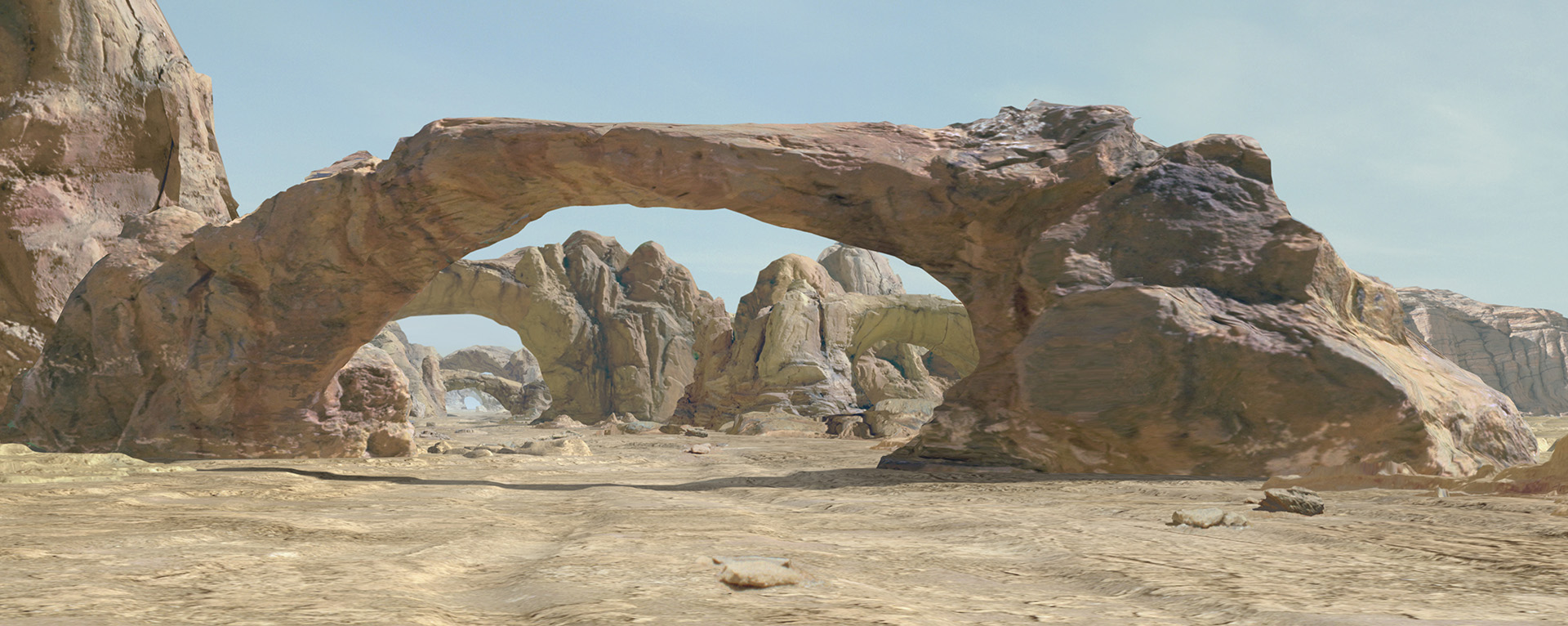The Digital Road to The Phantom Menace: Texture-Mapping Worlds from Neverland to Tatooine
An early digital tool largely fell out of use before its revival to help create the exciting podrace.
“The Digital Road to The Phantom Menace” is a Lucasfilm.com series that explores Industrial Light & Magic’s work in pioneering digital visual effects, and specifically how advancements on projects throughout the 1990s became essential tools for creating Star Wars: The Phantom Menace. The most ambitious visual effects project ever undertaken up to that time, the film is now celebrating its 25th anniversary.
Creating matte paintings to alter or expand the setting or background of a shot is among the oldest techniques in visual effects. The traditional method of hand-painting the alteration remained in use for decades, including during the early years at Industrial Light & Magic (ILM). These paintings were integrated into shots in different ways, from placing them in front of a camera to alter the appearance of an existing location, or through the combination of distinct photographic elements through optical compositing. The ILM artists used these methods for everything from a view of the Death Star in the Star Wars saga to the endless expanse of the mysterious government warehouse glimpsed at the end of Raiders of the Lost Ark (1981).
By the early 1990s, ILM was busily integrating digital effects tools into their workflow. While many techniques were devised to bring elaborate characters to life, such as an otherworldly water tentacle in The Abyss (1989) or a liquid-metalized man in Terminator 2: Judgement Day (1991), others were employed to bring entire locales to the screen.
Steven Spielberg’s Hook (1991) was a fantasy adventure that relied on many practical effects methods, but ILM also sprinkled a number of digital techniques into the mix (including actual pixie dust!). A number of matte paintings were utilized to depict views of Neverland, many of them created with traditional methods. One shot, however, involved a flyover with Peter Pan (Robin Williams) soaring high above the island and flipping onto his back with joy. Visual effects supervisor Eric Brevig would explain, “I couldn’t use traditional back-lit blue screen to do the kind of crane pull-back on Robin that I needed, so I knew we’d be doing a digital composite, at the very least.” Rather than construct a physical model of Neverland, a painting by matte artist Yusei Uesugi was digitized and applied to a computer-generated wire-frame model made by computer graphics supervisor Stefen Fangmeier.
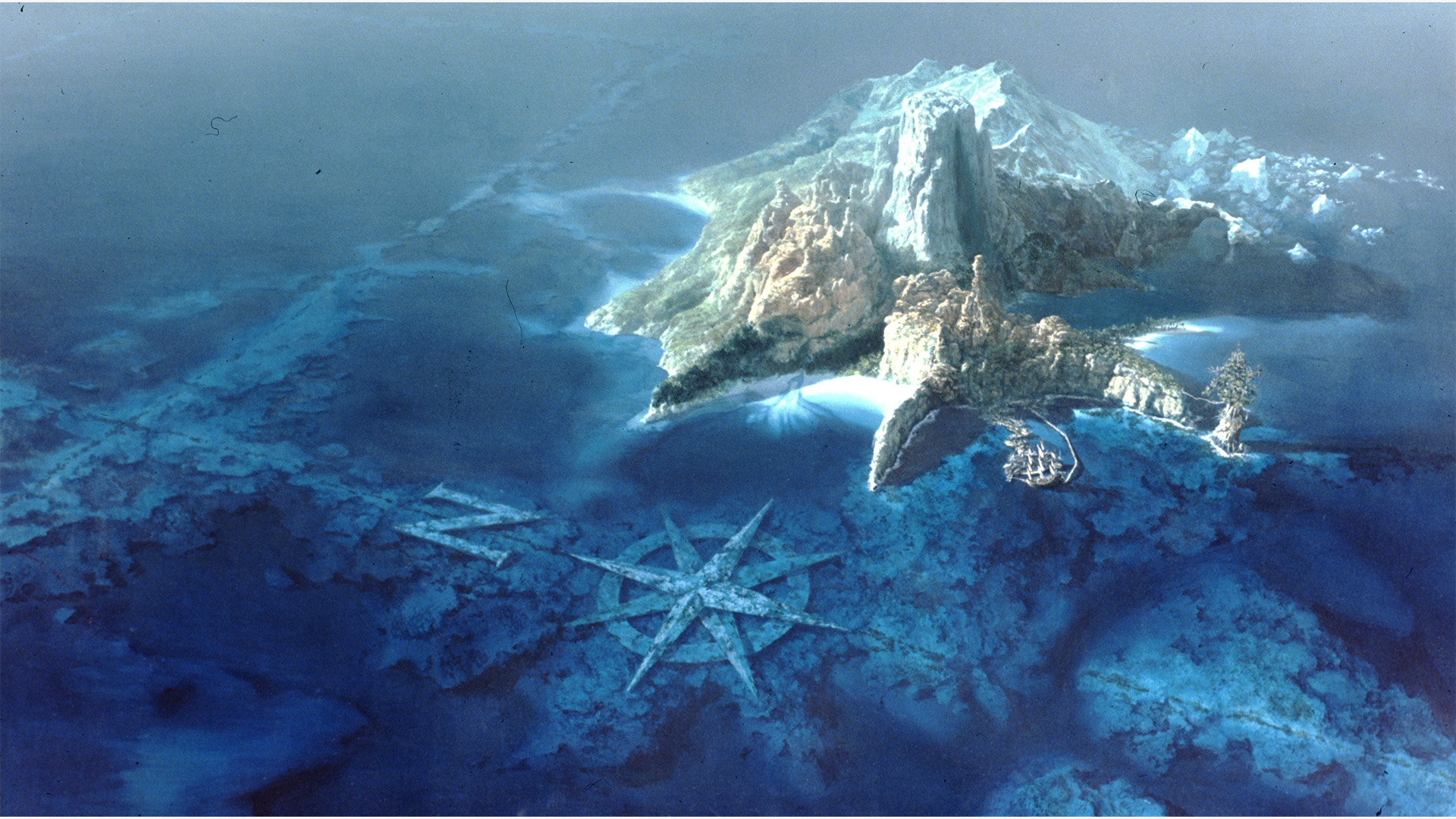
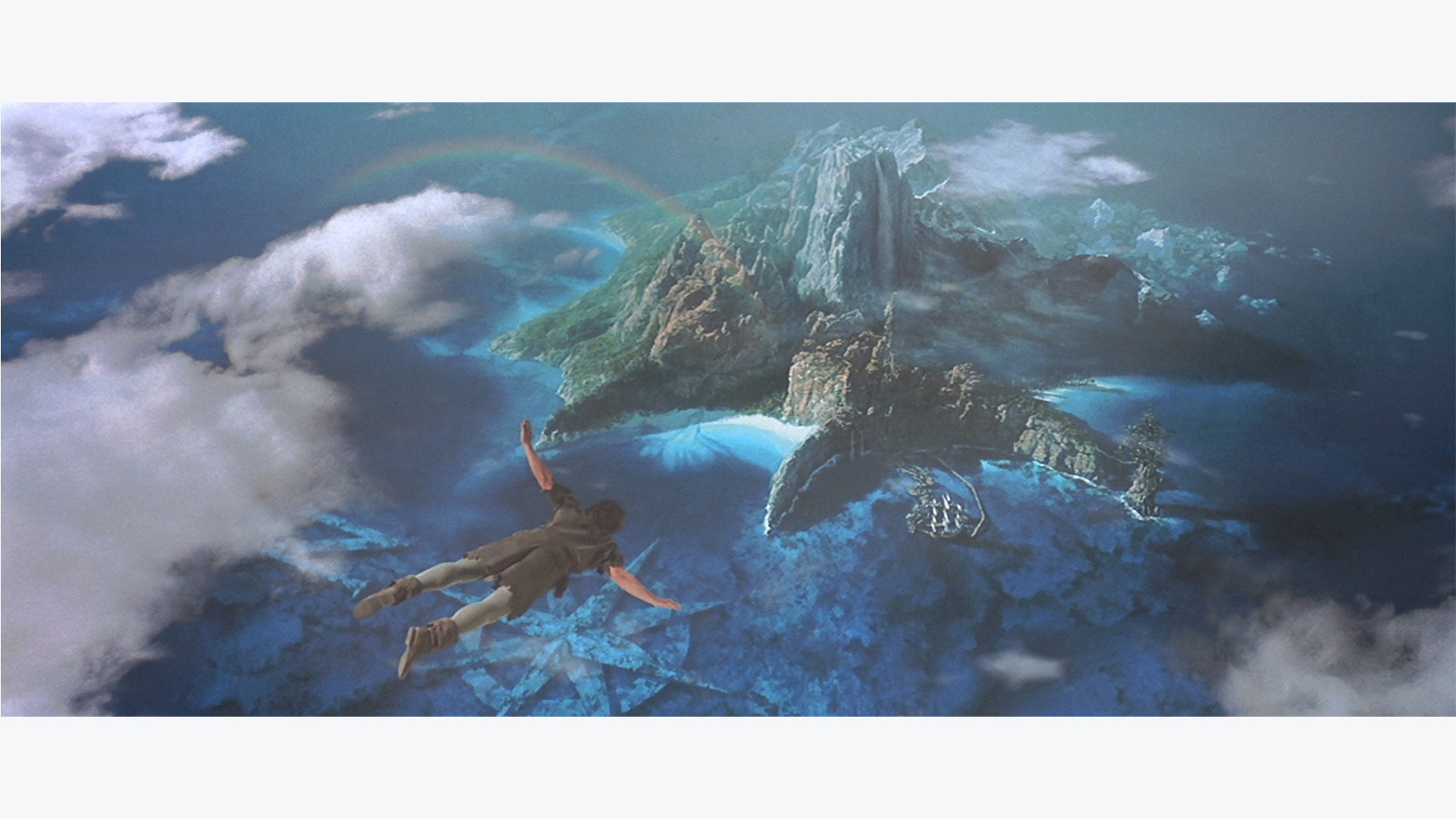
This process is known as texture-mapping, and was in part adapted from a tool called “Make Sticky,” first created to realize the reflective surface of Terminator 2’s villainous T-1000. “We actually built a little island in the computer,” Fangmeier would explain to Cinefex magazine about the Hook effect. “We scanned in the painting, built some three-dimensional geometry that conformed perfectly to the shape of the painting of the island, and then sort of ‘wallpapered’ the matte painting over the computer model with the texture-mapping technique, using the color information we had obtained from the scanned-in painting. It was a subtle effect.”
ILM’s current chief creative officer John Knoll would observe that the shot “was magical,” as he explained for the Star Wars Celebration Commemorative Guide in 2019. “Suddenly, it didn’t look flat any more. There was an illusion of perspective. It looked like a helicopter shot. I thought it was such an innovative technique, and that was 1991.” According to Knoll, the tool remained little-used following Hook. It was considered too challenging in most cases. But Knoll didn’t forget its effectiveness, and later the technique would be adapted for Star Wars: The Phantom Menace (1999).
Among Episode I’s most complex sequences was the podrace on the desert world of Tatooine. The intensive set-piece posed a number of technical challenges, not least of which was how best to depict the rocky landscape whizzing by the camera at rapid speed. More than one technique was used, including hand-built miniatures in specific instances, as well as some fully computer-generated terrain. A third approach, however, combined elements of the previous two.
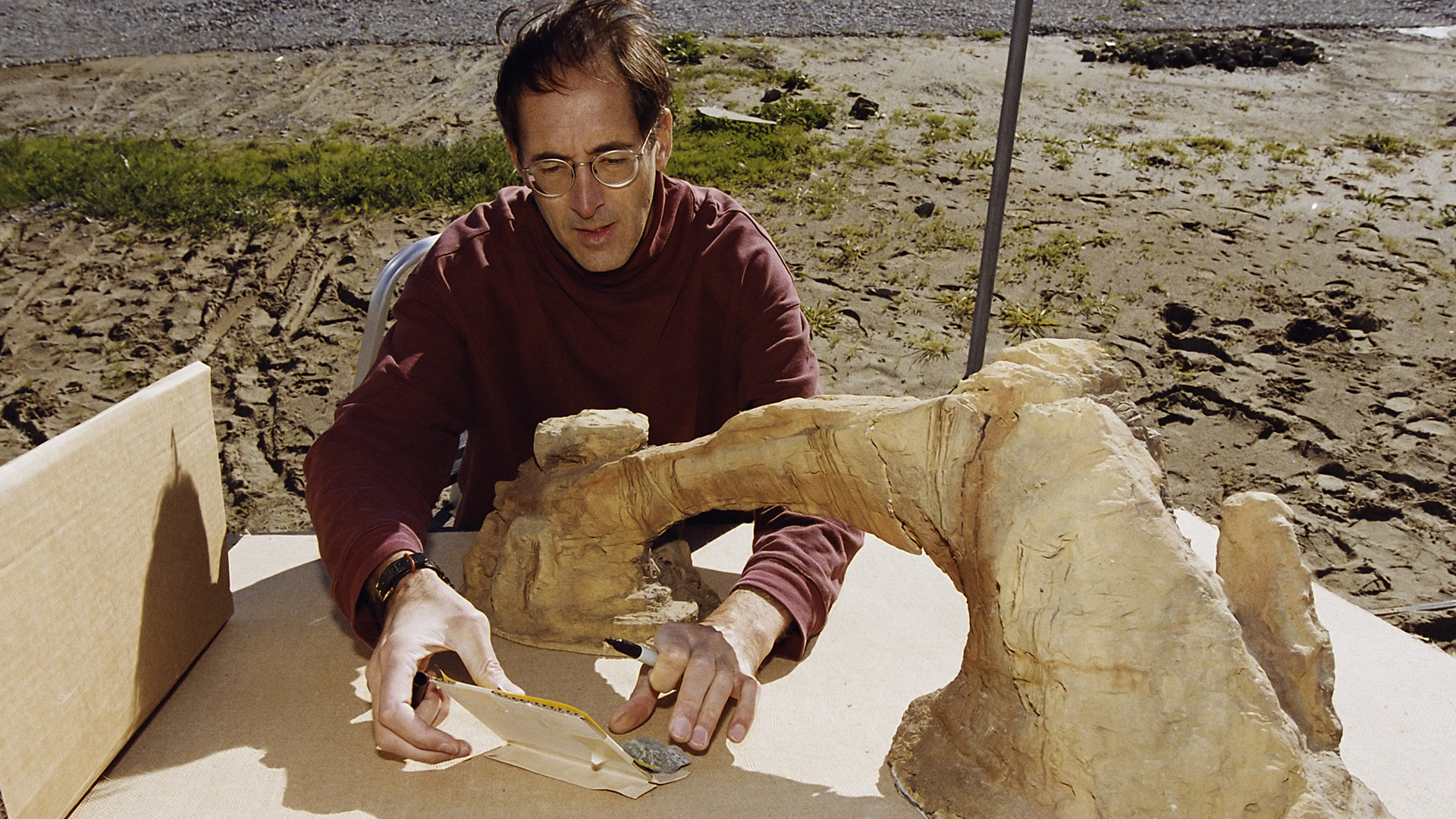
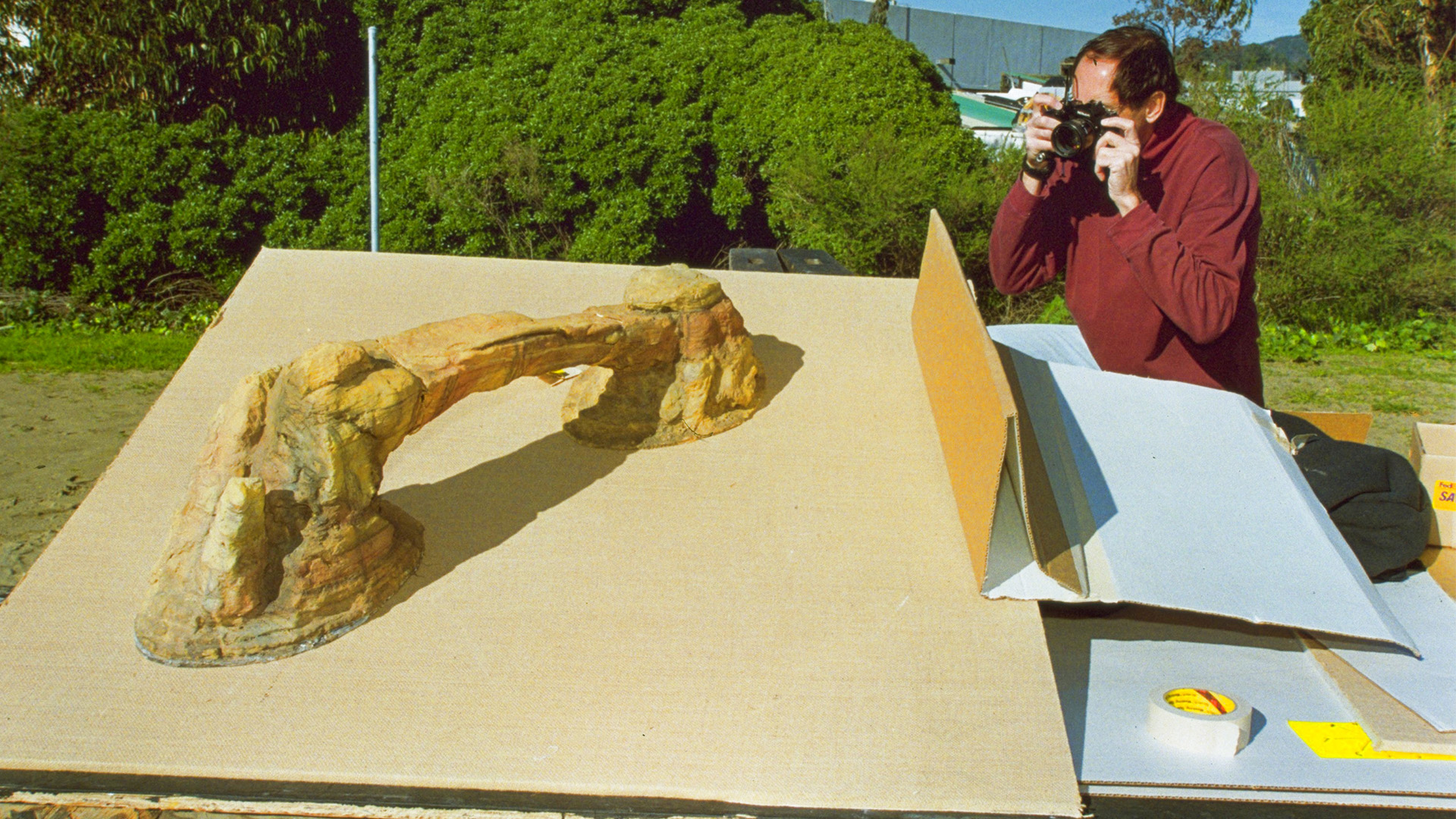
ILM artist Paul Huston had joined ILM on its first project, Star Wars: A New Hope (1977). Over two decades into his tenure, he was still making contributions to the galaxy far, far away. Before The Phantom Menace, the Star Wars Special Edition theatrical releases in 1997 had been an important test ground for digital effects methods. For one new shot in A New Hope, Huston experimented with creating a view of Obi-Wan Kenobi’s home on Tatooine by digitizing a practical miniature and then projecting real-world photographs onto its surface. As the camera pushed in on the building, this texture-mapping method would help create a more believable sense of dimension. That, at least, was the intent. George Lucas, however, decided the technique didn’t fit the aesthetic of the original Star Wars film.
Huston would revisit the concept for the podrace. One memorable section of the desert course featured dozens of rock arches through which the pods flew. “[Visual effects supervisor] John Knoll became interested in my approach,” Huston told Cinefex. “I did some additional tests featuring a variety of different views – one started with a flying-forward motion, with the camera looking backward and then panning forward to look at the terrain that was approaching.”
John Knoll would recall how “Paul did some tests early on where he built some rocks out of foam and plaster, took them out in the parking lot to photograph, and then used a 3D stylus tool to record its surface points and replicate a 3D model in the computer. We’d then match the photography onto the rocks and build up a terrain. The first test I saw as running footage was shocking. It was clearly the way to do it.”
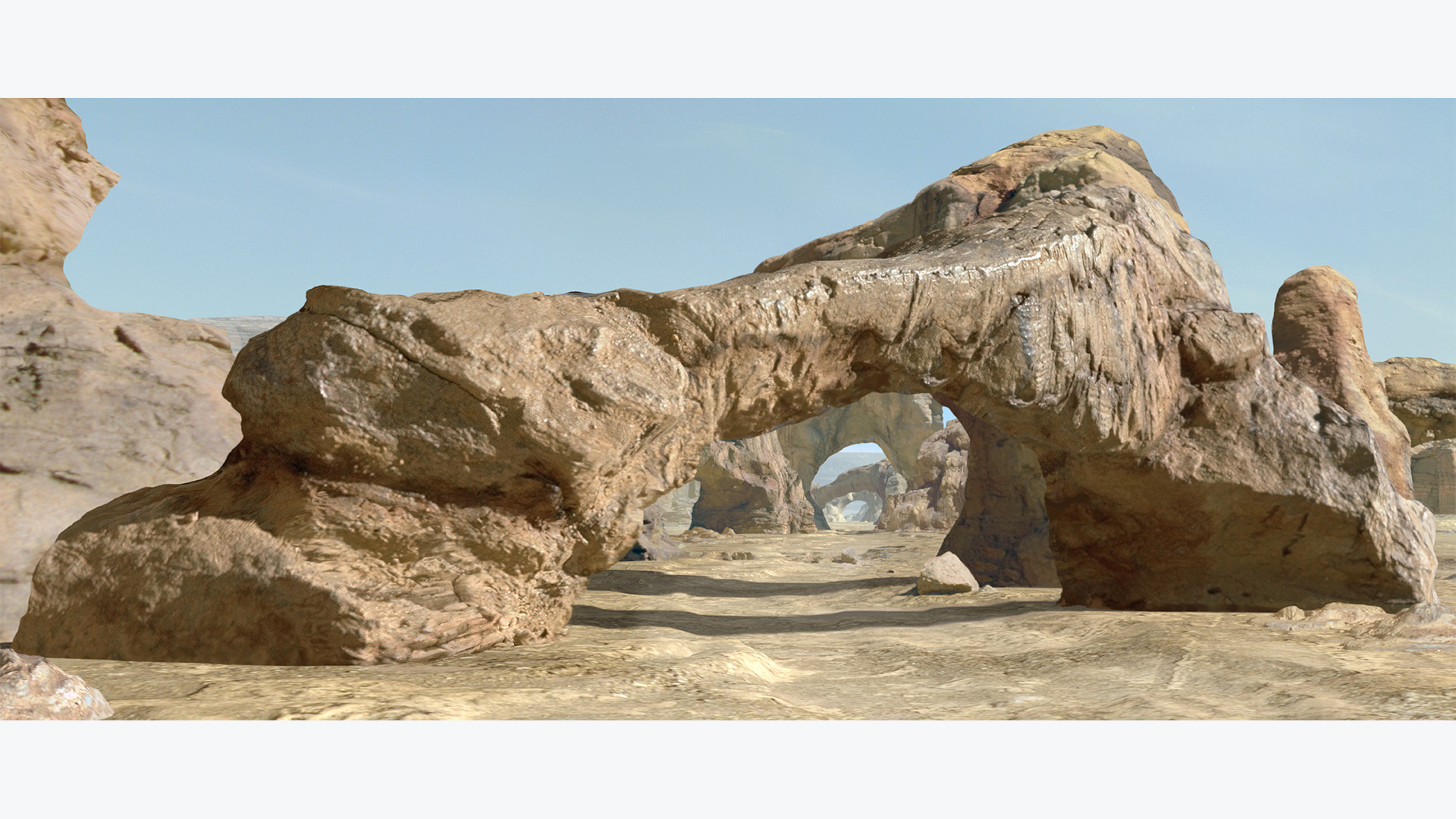
The ability to move the virtual camera through such terrain at hundreds of miles per hour whilst maintaining three-dimensional geometry and perspective was a significant breakthrough in realizing the podrace sequence. In prior decades, attempting something of the kind completely with miniatures would’ve been largely impractical. Shooting helicopter plates of exotic locations wasn’t feasible either. “No place on Earth is quite as unusual and distinctive as what George had in mind for the terrain here,” Knoll would explain in The Phantom Menace commentary. And uniquely for the time, although computer graphics were improving rapidly, ILM was still learning the best ways to fully scratch-build and render an extensive location in three dimensions. Having been introduced years earlier, texture-mapping proved the right tool to bring the setting of George Lucas’ imaginative galaxy to the screen.
Lucas O. Seastrom is a writer and historian at Lucasfilm.
—
Lucasfilm | Timeless stories. Innovative storytelling.

